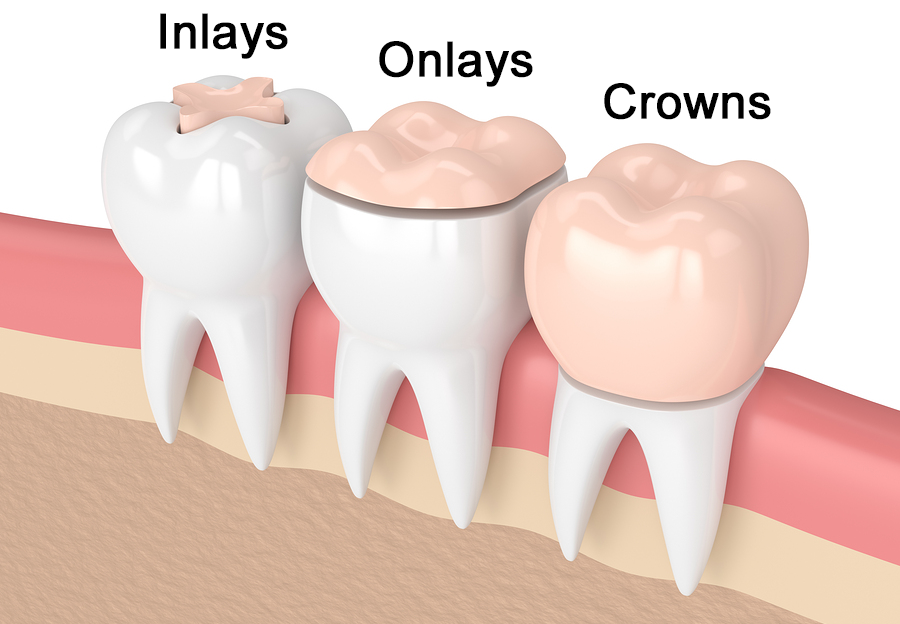If you get self-conscious about your silver dental fillings, take comfort in the fact that there are other alternatives to natural-looking fillings, such as a dental inlay.
A dental inlay is a type of restoration that typically looks like natural teeth and fixes an existing tooth that is too damaged to support a tooth filling, but not so much that it needs a dental crown. It covers the chewing surface between the cusps, while onlays restore one or more fractured cusps.
Both dental inlays and dental onlays are intended to repair the tooth’s chewing surface, and in some cases, repair teeth with other restoration options: the dental filling, which fills a hole in the tooth, and the dental crown, which covers most of the tooth.
A dentist may choose from materials such as gold, tooth-colored composite resin and porcelain to create an inlay, depending on your choice of aesthetic appeal, longevity and your budget. Regardless of the material your dentist recommends, inlays are often more durable than amalgam or composite fillings, less expensive than dental crowns and are not likely to have complications during the procedure.
Placing and Caring for an Inlay
Typically, a dental inlay procedure is an “indirect dental restoration,” a restoration that requires a mold made in a laboratory and is usually completed in two or more visits. The dentist administers local anesthesia, prepares your tooth, makes a mold of the area and places a temporary inlay. The mold is sent to a dental lab where the custom inlay is created. While this whole process normally takes a few visits, recent advancements in dental technology such as CEREC® have now made it possible to complete these procedures in just one visit.
Just like with natural teeth, caring for inlays requires good oral hygiene habits like brushing and flossing daily, things you should already be doing anyway. And don’t forget your regular dental visits — these checkups allow your dentist to detect any problems at their early stages.

